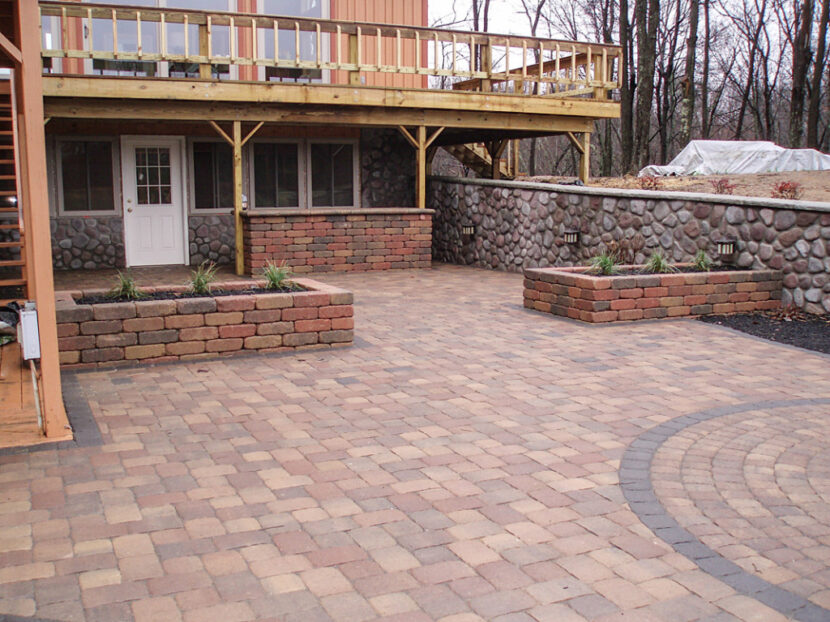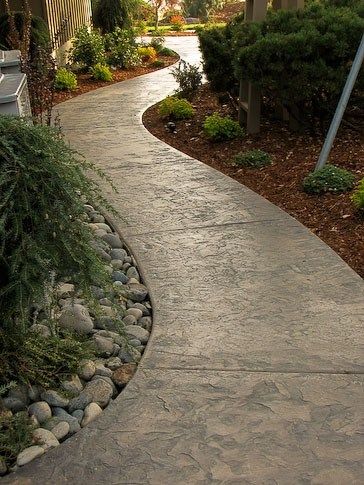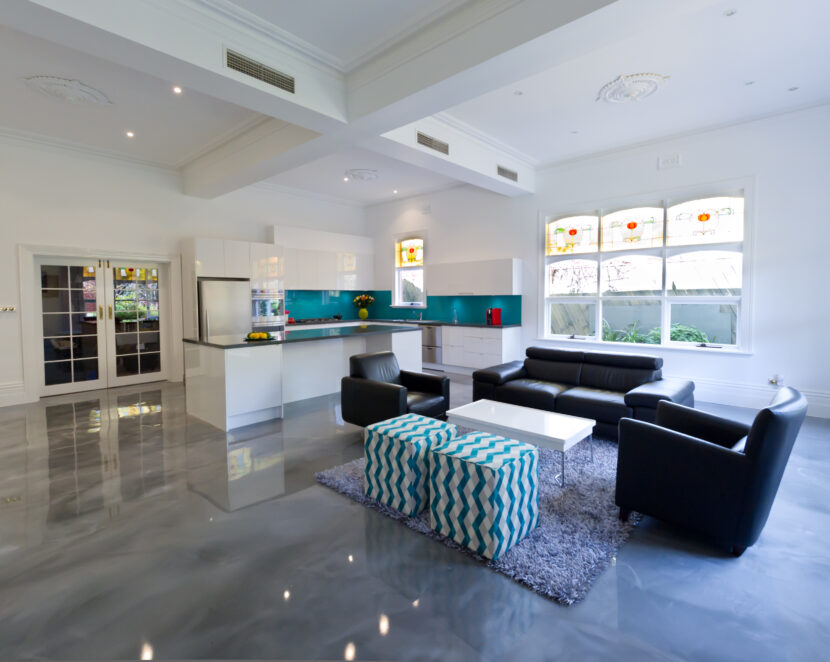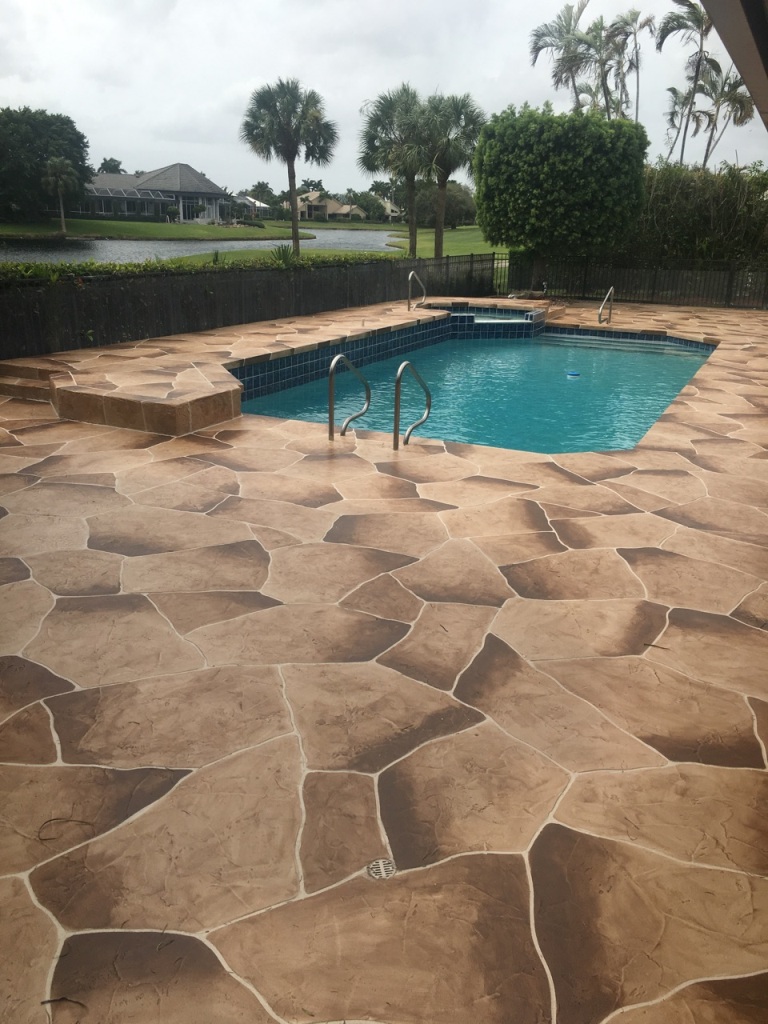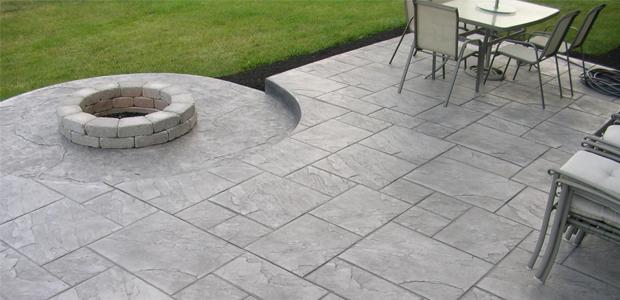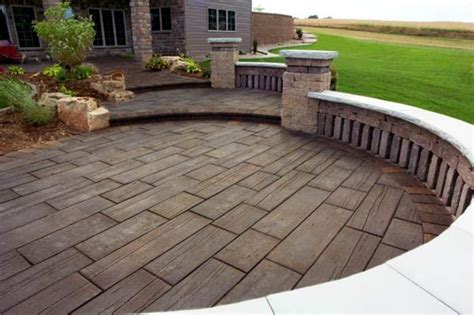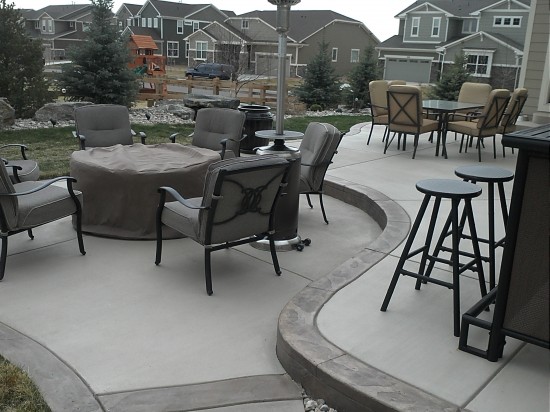How to Make Your Deck Or Patio Floor Last longer Using Colorful Concrete
Decorative concrete is when concrete is used as a decorative, unique, and artistic material in home construction.
The use of decorative concrete includes concrete toppling into decorative patterns, concrete pouring in decorative patterns, concrete polishing, staining, and the use of color. Decorative concrete is used as not only a utilitarian tool for construction but more as an aesthetic feature to a construction, such as floors, walls, driveways, patios, and stairs. Decorative concrete’s diverse uses make it one of the most important components of modern-day concrete designs.
Concrete is composed of aggregate materials consisting of cement, sand, limestone, or dolomite. Aggregates are then held together through chemical reactions. Some of these chemical reactions produce heat which is used to add the different aggregate materials such as sand, limestone, and dolomite. As this building material cools and solidifies it becomes decorative concrete.
There are many forms that decorative concrete can take. These include textured, imprinted, decorative stamped patterns, natural looking stamped patterns like squares, circles, and rectangles, and colored concrete. Colored concrete is decorative concrete in the form of stamped patterns that can be sealed and protected from water, sun, wear, and tear, and chemicals. This type of decorative concrete can take on a variety of complex textures and colors.
One type of decorative concrete contractors offers colored poured concrete.
Colored poured concrete, sometimes called tinted, has a high reflective surface. Because of this the contractor may use any variety of bright colors that will effectively reflect light. Another advantage to using this type of colored concrete is that it creates a texture and appearance similar to stained concrete. Some decorative concrete contractors offer colored concrete that has a baked-on look or one that has an engraved look to it.
Tumbled tiles are also available as decorative concrete contractors. Tumbled tiles can have a high gloss appearance that makes the file appear shiny and new. Tumbled tiles can mimic stone surfaces and they can also be made of colored glass for a glittery look. The tiles can be purchased in tumbled styles that mimic slate, bricks, cobblestone, marble, and porcelain. The decorative concrete contractors that tumbled tile can produce are perfect for bathroom and kitchen counter tops, walkways, pool decks, driveways, and other surfaces that need to be decorated.
Stained concrete is another popular form of decorative work. Stained concrete can be created with different types of stains including oil-based adhesives, resin-based stains, and high grit epoxy resins. Stained concrete can be perfect for driveways, walkways, patio floors, stairs, sidewalks, landscaping, and interior walls. When stained concrete is sealed with a sealer, the color of the concrete will not fade but will retain its beautiful luster.
A very interesting look that can be created by using decorative concrete contractors is using a colored aggregate mix. Aggregates can be mixed using a variety of colors including earth tones and natural-looking colors. The concrete contractor can create a brick-like or pavers look that mimics natural materials such as stones, bricks, granite, slate, sandstone, ceramic, tile, and wood. It can be used on floors, landscaping, and exterior walls. Colored aggregate mixes can even be used to create the look of stained wood.
Decorative concrete contractors can help you create the complex patterns, designs, and textures that can be created using various stains, finishes, and colors.
This type of work is often done to imitate the more elaborate styles of marble, granite, stone, and brick. When you use the services of a reputable company, the finished project will be attractive, durable, long lasting, and unique.
When you use the right contractors, you can have the best part of the project completed quickly, easily and at competitive prices. Once you decide on a particular color or pattern, you can discuss the use of pavers, bricks, tiles, textured materials, and the like. The contractors will be able to discuss the best use of these materials with you so that you have the best part of the project completed in the least amount of time and with the most unique appearance.
One of the most popular decorative concrete projects is creating a texture with the use of stamped patterns. There are different textures that can be created from various sources, such as natural stone, brick, and even wood. These textures can be designed using various colors including primary, secondary, and even contrasting colors.
The pattern can be stamped into the ground, carved into pieces, and laid in a wide variety of ways. The finished product will often replicate brick patterns, brick planters, planter boxes, even granite. The stamped patterns will not be smooth and may have an uneven texture. It is important that the contractors create the best texture possible because the texture will be one of the main selling points of this unique material. The stamped patterns will also be stamped in multiple colors and this allows for a range of unique patterns to be used.… Read the rest
Decorative Concrete Concepts in 2021
Decorative concrete is used to build sidewalks, garden walkways, patios, and pool decks. Concrete is also used inside for indoor living areas like foyers, bedrooms, and cold rooms. Generally, concrete that you see on the sidewalk has most likely been applied by hand, resulting in a smooth, uniform appearance.
There are many things that can be done with decorative concrete to improve the look of your home. A walkway or patio will instantly add value to your property. You can even do it yourself, if you’re handy with tools and concrete. Make sure that when you apply decorative concrete, you build up around your walkway or patio. This will help prevent cracks from building up and will make the walkway or patio last longer.
Another way that decorative concrete can be used is to surround your driveway. Around your driveway, you can use decorative concrete to make it more attractive. Decks of wood surrounding your driveway can be a little bit more expensive than a simple slab of decorative concrete, but they will last longer, and are much more aesthetically pleasing. Because it’s stony outside and concrete inside, wood is naturally more attractive. Of course, you’ll need to consider if you want the texture of the wood to match the exterior of your home.

Once you’ve begun using decorative concrete around your house, you’ll begin to get a better sense of what type of color options are available to you. One of the most popular color options is to simply keep the concrete color in the same vein as your house. You can do this by simply having your driveway and other exterior surfaces in the same tone as your house. For instance, if your house has a light blue tinge, you can have the decorative concrete overlays in your driveway and around other exterior walls in the same blue tone. You can also mix a darker blue for the exterior of your home, or even opt for a lemon yellow.
There are a number of decorative overlays to choose from, including ones made out of metal and different textures like stone or brick. These overlays are made out of a variety of materials, including solid surfacing, stamped concrete, and many more. There are several reasons why you might use a decorative concrete surface instead of another material, including: because it’s a little bit cheaper (because the concrete surface doesn’t need to be finished), because you don’t have to finish it, you can move it and create another design, and you don’t have to finish it (there is no need to wax). However, before you decide to install one of these decorative overlays on your own, there are a few things that you should know. Installing decorative overlays is a lot different than installing regular concrete.
The first thing that you need to do is make sure that you have the proper tools and supplies. You will need a power washer, a trowel, a level, a hammer, cement, and colored concrete paints, an overhead light, and a hose, and some adhesive. You can find decorative concrete paints at hardware stores, like Home Depot, or you can go to some of the online decorative concrete supply websites and purchase them as well. When it comes time to do the actual installation, you will have to make sure that your decorative overlays are flat and level, and you will need to use the correct amount of adhesive to keep them in place once they have been applied to the surface of your driveway, walkway, or patio.… Read the rest
How Can Concrete Overlays Be Used on Concrete Surfaces?
Concrete overlays are used to give the surface of a concrete slab a nice, smooth surface that is less abrasive. These also help to make the surface less slippery when it comes time to slip and fall. The overlays are also used to protect the concrete from the weather.
Concrete slabs are normally placed on the ground and then the top layer of concrete is poured over the surface. The process is called “pouring”pouring and troweling.” The trowel is used to “punch out” the concrete. The concrete is then “painted” with a special paint that is designed to blend with the surrounding concrete.
When the concrete is poured it is held in place by a trowel or another type of anchor. The trowel is used to help prevent slippage. It can also be used to help the concrete “stick” to the surface when it is being poured.
Once the concrete is poured and the anchor is placed it is then sealed with a sealant. This sealant is a polyethylene substance that is applied to the concrete to help it bond with the sealant. When it is done it is left to dry.
Once the concrete is dry, it is then ready to be placed over the concrete surface with concrete overlays. The process of pouring the concrete overlays is done on a concrete surface that has been cut off the bottom. This makes it easier to pour the concrete overlay on top of the concrete. The concrete is first set on the concrete surface using a trowel and then poured over the top.
Once the concrete has been poured it is set on top of the concrete using a trowel. After the trowel is removed from the surface it is then left to dry. When the concrete is dry, it is ready for the concrete overlays to be applied. These are made up of a special coating that is applied over the top of the concrete.
The coating is made up of a polyethylene material that is mixed with a water-based polymer. This coating is applied to the concrete and then allowed to dry. Hardness is also important so that the concrete does not sink into the concrete when it is being laid.
The next step is to remove any loose concrete from the concrete surface. And then the concrete is laid on top of the concrete with concrete overlays. This is where the real work begins.
When laying concrete, it is important to lay the concrete with enough space so that the concrete does not slant off the concrete surface. This can be done by using some type of guide that is placed under the concrete. This will help the concrete in laying the proper way.
The next step is to then cut the concrete into the proper sizes. It is important to make sure that the concrete is cut in the proper size and shape. If the concrete is cut too small the concrete will end up sinking in and if it is cut too large it will come off the top of the concrete surface during the laying of the concrete overlay.
The final step is to place the concrete over the concrete with concrete overlays. After this is done the concrete is cut to size and it is placed on top of the concrete. It is important to make sure that it is set over the concrete the same way that it was cut into the concrete.
After the concrete is set, it is then used for any building project that requires concrete. It is used on the bottom of the building to give the base a smooth look. It can be used on the top of the building to make the concrete look smooth and to prevent slippage.
There are several different ways that concrete overlays can be used on any type of concrete surface. Some of these include on the top of a building for the base of the building to give it a smooth look. Another use is on the base of a walkway or driveway, to give it a smooth look.… Read the rest
Designing Your Landscape With Decorative Concrete
Decorative concrete is one of the new trends in landscaping. Instead of just painting the landscape, you can make it look more beautiful and unique by adding decorative concrete. It can be the focal point in the yard or it can help give your landscape a new look.
Concrete is an extremely durable and common feature in the landscape. However, it can be made to be more decorative.
The first step in using decorative concrete is to choose the material. You can use crushed stone, crushed rock, sand or rubble. This will depend on the size of the property and the material that is available.
When looking for decorative concrete, it is important to know that there are certain things to consider before purchasing it. First of all, the height is crucial. It is best to choose a surface that is at least four feet high. A less than ideal height could have a negative impact on the appearance of the landscape.
The next step is to determine the design that will be applied to the decorative concrete. Different surfaces will need different designs. For example, a large bowl shape might need a decorative concrete overlay, while a smaller circle with a decorative edge may be better suited for a pond design.
To begin, you will need to decide how you want the decorative concrete to be applied. Most designers choose to apply it by pouring into the hole and letting it set. Others prefer to use the technique called a slip and slide application. Both techniques are effective.
Another thing to consider is the method of application. While some designers choose to apply the decorative concrete by pouring, others prefer the use of a slab. This is important, especially if the surface will be exposed to the elements.
Another thing to consider when considering decorative concrete is the stain or sealer that will be used. Some stains and sealers are meant to be applied by hand. Others are meant to be applied by machine.
Many people choose to use colored concrete in their landscaping projects. They can achieve a variety of colors by using different colors of concrete. Other ways to achieve color is to mix different colors together.
After choosing the material and design, it is time to begin applying the decorative concrete. You can do this yourself or you can hire a professional to do it for you.
Once the concrete has been applied, it is time to cut different shapes out of it. Concrete can be shaped with a mold or a diamond cutter. If you do not own a diamond cutter, it is important to consult with a professional.
After the decorative concrete has been applied, it is time to finish it off by applying some final touches. A concrete stripe, decorative edge, landscaping borders, and flower beds are all popular choices for finishing the concrete.… Read the rest
